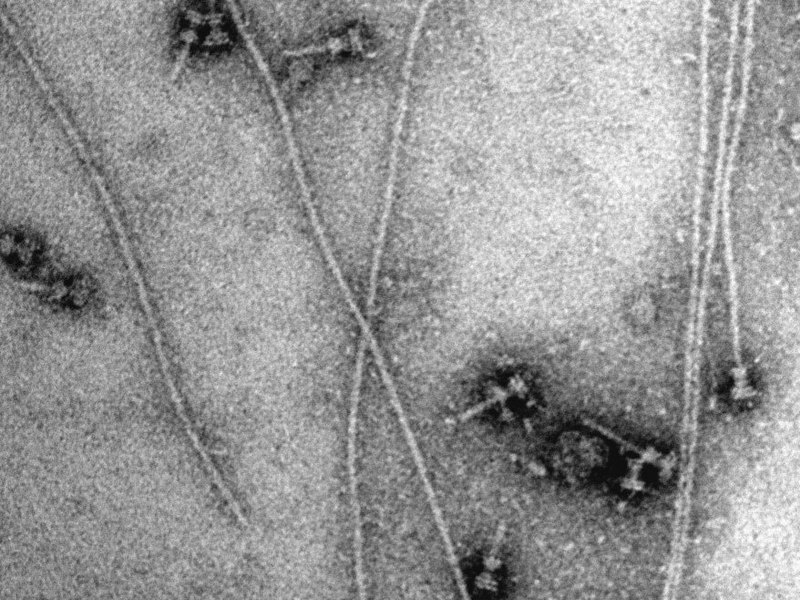
Syringes isolated from Shigella flexneri. Adding soluble needle protein leads to a spontaneous elongation of some needles. The bar corresponds to 100 nanometers (1 nanometer corresponds to a millionth millimeter). (Credit: Christian Goosmann, Michael Kolbe/Mac Planck Institute)
Zooming in on bacterial weapons in 3D
The researchers deciphered the structure of the needle atom by atom and visualised its molecular architecture for the first time in the angstrom range (one tenth of a nanometer).
This required progresses in several fields. “We have made big steps forward concerning sample production as well as solid-state NMR spectroscopy,” says Adam Lange. “Finally, we were also able to use one of the presently most powerful solid-state NMR spectrometers in Christian Griesinger’s NMR-based Structural Biology Department at our Institute.” With 20 tesla, the magnetic field of this 850 megahertz spectrometer is about 400,000 times as strong as that of the Earth.
“We were surprised to see how the needles are constructed,” says Lange. As expected, the needles of pathogens causing diseases as diverse as food poisoning, bacterial dysentery, or the plague show striking similarities. /.../
No comments:
Post a Comment